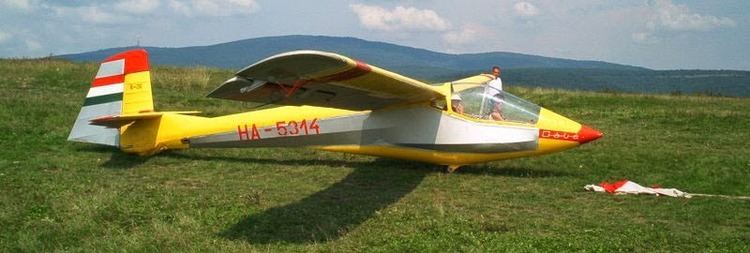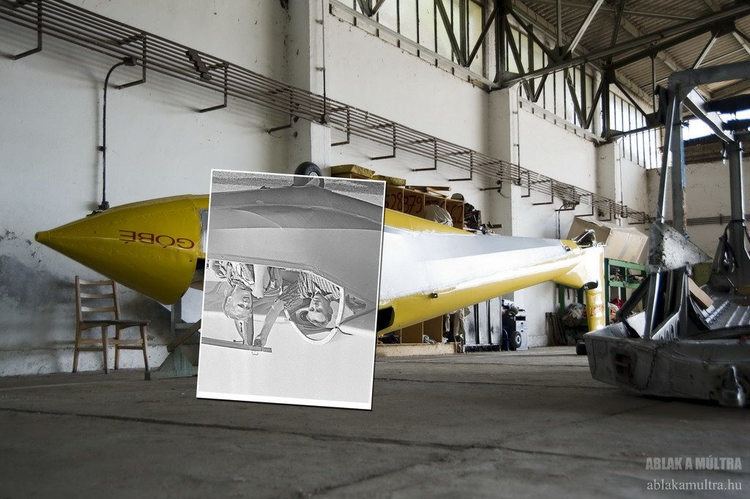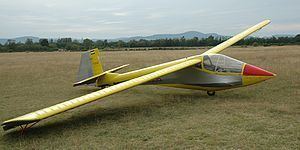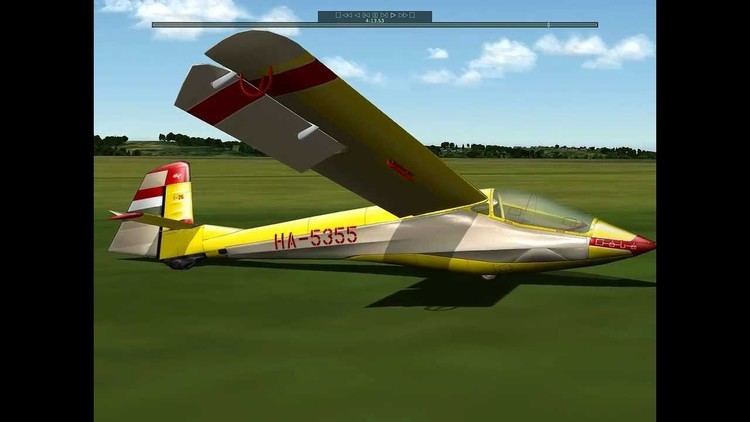Wingspan 14 m | Manufacturer Auto-Aero | |
 | ||
Glider crosswind landing rubik r 26 g b at lhdk
The Rubik R-26 Góbé is a family of Hungarian shoulder-wing, two-seat training gliders that was designed by Ernő Rubik (the father of Ernő Rubik, the inventor of the Rubik's Cube), and produced by Auto-Aero. After its introduction the R-26 Góbé became the de facto training glider type in Hungary and is still used by many clubs for basic instruction.
Contents
- Glider crosswind landing rubik r 26 g b at lhdk
- Design and development
- Operational history
- Variants
- Aircraft on display
- Specifications R 26S
- References

Design and development

One of a series of all-metal gliders designed by Rubik from 1957 onwards, the R-26 Góbé was intended to provide two-seat instruction, with the rear seat raised for a view forward. Series production started in 1962 and the first production aircraft flew in August 1963. Almost 200 were produced.

The Góbé is of predominately aluminium monocoque construction. The wings have a metal D-box ahead of a single main spar, covered in corrugated metal, aft of the spar they are covered in doped fabric. The wing has a modified a Goettingen 549 airfoil; the perforated Schempp-Hirth air brakes extend from the upper and lower wing surface. The slatted Frise ailerons are covered in doped fabric. The stiffness of the corrugated metal leading edge provides high structural strength for the wings, enabling Rubik to omit extra ribs and rivets. This resulted in lower production costs and lower empty weight compared to other two-seater gliders typical of that era. The landing gear consists of a fixed monowheel and a tail skid. The V-tail of the first prototype was judged unsuitable for training and was replaced on the second prototype and production aircraft by a conventional unit. All the leading edges on the empennage are made of corrugated metal, the control surfaces are covered in doped fabric. The rudder is notably large and effective, its upper part serves as an aerodynamic servo, reducing the necessary operating force. The control force is transferred to the control surfaces via pushrods, except for the trim tab (mounted on the right elevator), which uses bowden cables. The instructor seat is not equipped with instruments; the rear seat is raised in order to give the instructor a view on the instruments mounted in front of the student. A separate rear seat instrument kit was available as optional equipment, making the glider capable for instrument (IFR) training.
The R-26S was designed to be easy to disassemble for ground transportation via trailer. It was not certified and the one imported to the United States was registered with the Federal Aviation Administration in the Experimental - Exhibition category.
Operational history
In all, 193 production Góbés were built, most serving in Hungary. Fifteen were exported to Cuba, one to the United Kingdom and one to Austria. One R-26S was imported into the US. As of July 2011 it is privately owned and based in Redlands, California. In mid-2010 seventy R-26S and fifty-seven R-26SU remained on the Hungarian civil register.
Variants
Aircraft on display
Specifications (R-26S)
Data from Sailplane Directory and Soaring The World's Sailplanes:Die Segelflugzeuge der Welt:Les Planeurs du Monde Volume II
General characteristics
Performance
